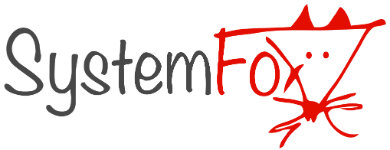Greenfield vs. Brownfield SAP Implementation Approaches:
Greenfield Implementation: A greenfield implementation is essentially starting from scratch. This approach involves designing and building a new SAP system from the ground up. It allows organizations to re-engineer and optimize their business processes without any constraints imposed by legacy systems.
Key Characteristics:
- Process Redesign: Offers the opportunity to reimagine and streamline business processes according to best practices, leveraging SAP S/4HANA’s full potential.
- Clean Slate: Eliminates legacy issues, allowing for a modern, efficient system with no inherited complexities.
- Customization and Flexibility: Enables high customization to meet specific business requirements, though it may require significant initial setup and planning.
- Implementation Time and Cost: Typically longer and more expensive due to the comprehensive nature of the project, requiring extensive planning, configuration, and training.
- Change Management: Requires significant change management efforts as employees must adapt to completely new systems and processes.
Advantages:
- Modernizes business processes to align with current and future needs.
- Takes full advantage of SAP S/4HANA’s capabilities without legacy constraints.
- Provides a clear, long-term strategic path for digital transformation.
Disadvantages:
- High initial cost and resource investment.
- Longer implementation timelines.
- Greater risk of disruption during the transition period.
Brownfield Implementation: A brownfield implementation, also known as a system conversion, involves upgrading an existing SAP system to S/4HANA. This approach retains the existing processes, configurations, and data structures, allowing for a more straightforward transition.
Key Characteristics:
- System Conversion: Involves upgrading the current SAP ECC system to S/4HANA while preserving existing customizations and configurations.
- Data and Process Continuity: Maintains continuity of business operations with minimal disruption, as existing data and processes are retained.
- Reduced Time and Cost: Generally faster and less expensive than greenfield implementations due to the use of existing system infrastructure and configurations.
- Incremental Changes: Allows for phased improvements and optimizations over time rather than a complete overhaul.
Advantages:
- Lower cost and quicker implementation compared to greenfield.
- Minimal disruption to business operations.
- Retains valuable customizations and historical data.
Disadvantages:
- Limited flexibility in re-engineering business processes.
- May carry forward existing inefficiencies and complexities.
- Potential technical debt from legacy systems may still need addressing.
Choosing Between Greenfield and Brownfield: The choice between greenfield and brownfield approaches depends on several factors, including the organization’s strategic goals, budget, timeline, and the current state of the existing SAP environment.
- Greenfield is ideal for: Organizations looking for a complete transformation and optimization of their business processes, those willing to invest in long-term benefits despite higher upfront costs, and companies without significant legacy constraints or customizations that need preservation.
- Brownfield is ideal for: Organizations seeking a quicker, cost-effective transition to S/4HANA, those with significant investments in their current SAP systems, and companies looking to minimize disruption while gradually improving their processes.
Conclusion: Both greenfield and brownfield implementations offer distinct advantages and challenges. The decision should align with the organization’s broader digital transformation strategy, ensuring the chosen approach supports the company’s long-term business objectives and operational needs. By carefully evaluating the benefits and drawbacks of each method, businesses can make informed decisions that facilitate a successful SAP S/4HANA implementation
